 |
 |

|
The Kepas |
|||
|
The term "Kepa" or "Kämpe" is used for naming several islands and also several of the areas near the banks of the Vistula. This usage seems unusual, since the German words "Kamp" oder "Kämpe" are used to name a bounded area – but usually not an island. The terms Kämpe, Kamp or Camp are derived from the latin "campus" which stands for "flat field". The terms were common in all old Low German dialects and also in the Dutch language. Today they still appear in the Northern parts of Germany as field or street names. The Polish word Kępa stands for bunch, bundle or tuft. Occasionally "island in a river" is given as a second meaning. The resemblance in pronunciation to the word "Kämpe" is significant. It seems that in Poland only islands in regions where Dutch or German settlers had lived are called Kępa. The usual Polish term for naming an island is "wyspa". So what distinguishes a "normal" river island and a Kepa? |
|||
|
To find out, we have to define what a "normal" island for a river is like: Normal seems to be an island that developed from deposits of the river - usually called a bar. |
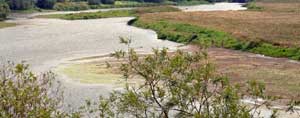
Bar at the river Bzura - Photo by: Jutta Dennerlein, 2003 |
||
|
Bars often change their position or shape and most times disappear after a few years or decades. They are overgrown by small plants and bushes, since their sandy consistence doesn't allow bigger plants. |
|||
|
Whereas the characteristic feature of the Vistula Kepas is their population of huge trees! |
|||
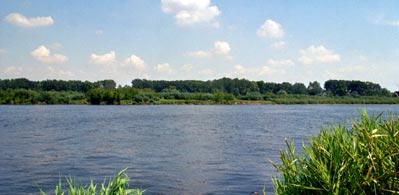
The Kępa Tokarska seen from the left bank of the Vistula near Płock |
|||
|
Already in 1799 this unusual fact caught the attention of the Prussian civil servant S. G. Borsche while he was looking at the Kępa Tokarska from the steep bank at Płock. Being an amateur geologist he developed a logical theory which he explained in a letter to a friend: The tree covered islands in the Vistula did not develop from deposits. They were parts of the banks that became islands after the river changed it's way through the valley. This theory not only explains how the huge trees came to the islands, it also explains the considerable size of some of the islands and the fact that people were able to build houses on them )*. Obviously the trees indicate the habitability of an island and the habitability distinguishes a "Kępa" from a "Wyspa". In addition Borsche's theory gives an explanation why islands and parts of the banks were named the same way: With a free flowing river it was only a question of time till banks would become islands and islands would become banks. The following maps showing the Kępa Karolinska should illustrate that: |
|||
|
In 1839 the Kępa Karolinska had been a huge island in the middle of the Vistula. |
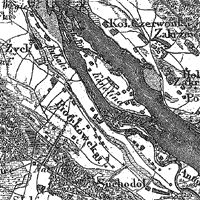
Map of 1839 |
||
|
In 1902, only 63 years later, the Kępa Karolinska is still an island. But it seemed to have moved very near to the left bank of the Vistula. Only a very narrow part of the stream is separating it from the bank. |
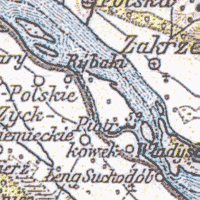
Map of 1902 |
||
|
Another 90 years later, in 1994, the Kępa Karolinska had become a part of the left bank. Only isolated ponds give a hint of the former borders of the island. |
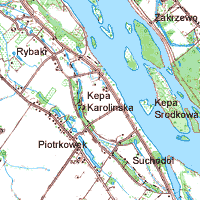
Map of 1994 |
||
|
Since the Kepas seem to be separated and thereby limited parts of the banks the usage of the German word "Kämpe" does not seem to be so unusual anymore. The banks and the islands of the Vistula have been among the first places where Germans had settled in Central Poland. So it seems logical that the word Kämpe that the Germans used for the islands found it's way to the Polish naming of places (see also Holendry). )* In Canada the criteria for calling an island officially an island is that there is at least one tree growing on it and only official islands can be built on. So the presence of trees seems to indicate if an island is habitable or not.
|
|||